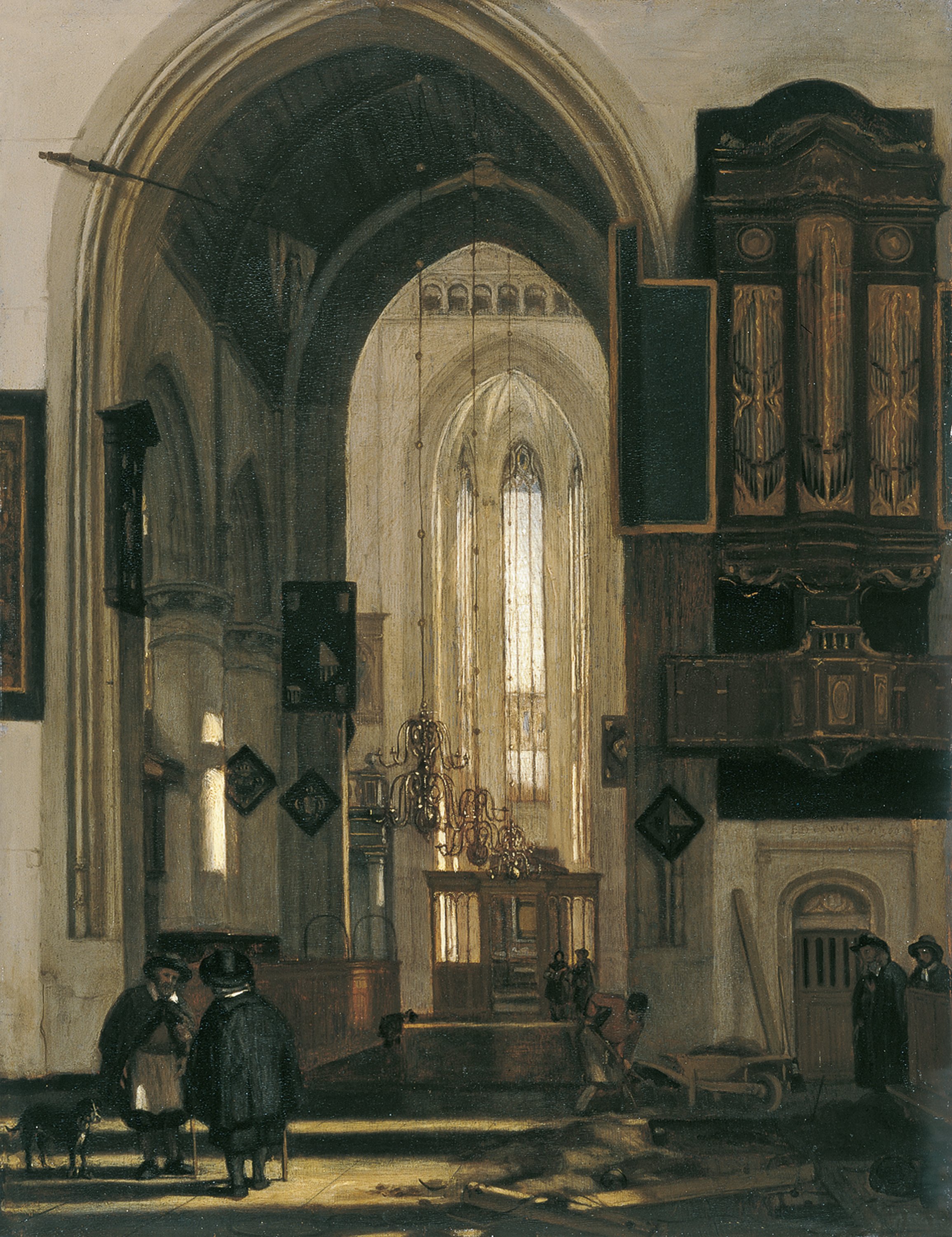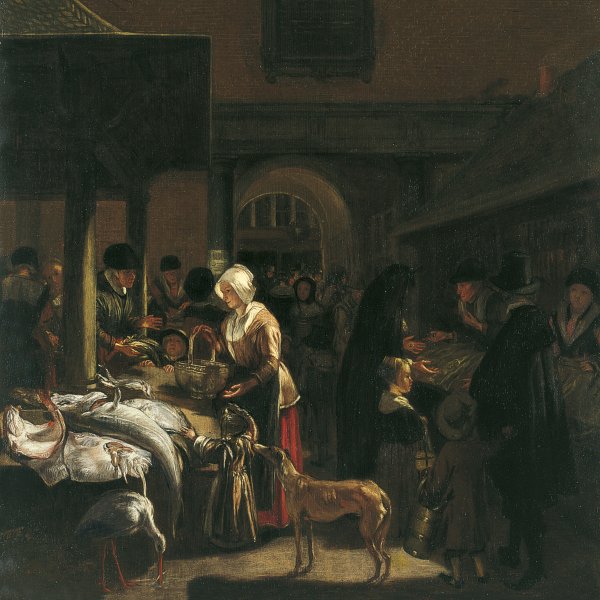Interior of a Gothic Church
In January 1652 De Witte left the city of Delft and moved to Amsterdam. During that decade his work also underwent a marked change that led him to focus on architectural views in the form of church interiors. In contrast to Saenredam’s views of this type, however, they are not strictly accurate. Rather, De Witte based himself on real interiors, some of which are recognisable in his paintings, using them to create imaginary views depicted with a high level of realism. The painter manipulated these church interiors in order to magnify their proportions and sense of solidity and spaciousness. Rather than using line, colour and light (which he applied in a geometrical manner), he focused on increasing the spatial recession to achieve these effects. Despite the use of these pictorial devices, his interiors never seem unreal or out of proportion and are always created through a highly complex perspectival structure.
The present signed and dated panel belonged to the Rev. Thomas H. Langford-Sainsbury in Beckington and was then in the collection of Arthur Kay in Edinburgh. It was subsequently auctioned in London and was with several more owners until a further auction in Amsterdam where it was acquired by the Cramer gallery in The Hague. From there it entered the Thyssen-Bornemisza collection.
De Witte depicts part of the crossing and chancel seen from the central aisle. The foreground, which is in soft shadow, is illuminated by a strong ray of light that enters from the upper windows and falls in patches on the floor and shafts of the columns. This atmospherically shady area leads on to the crossing and to the background where we see the chancel, illuminated by the high, narrow windows around its walls. In order to create a sense of depth De Witte used a receding line of arches with columns to create a diagonal that is emphasised by the line of brass chandeliers hanging from ropes from the ceiling. The colours also help to achieve the spatial complexity with the white tones tinted yellow by the sunlight and alternating with the greys and browns of the foreground. This colour range is to be found in numerous other works by the artist.
As Noach noted, some elements in this composition are inspired by the Oude Kerk in Amsterdam, for example, the chancel with its three windows, which is based on a chapel in that church. This panel was the subject of a photographic and infra-red analysis whose results were published by Gaskell. It revealed various changes that affected the depiction of the architecture. The figure of the gravedigger working in the interior is frequently found in De Witte’s paintings.
Mar Borobia










![Interior of a Gotic Church. Interior de una Iglesia gótica, ¿166[9]?](/sites/default/files/styles/full_resolution/public/imagen/obras/1972.10_interior-iglesia-gotica.jpg)